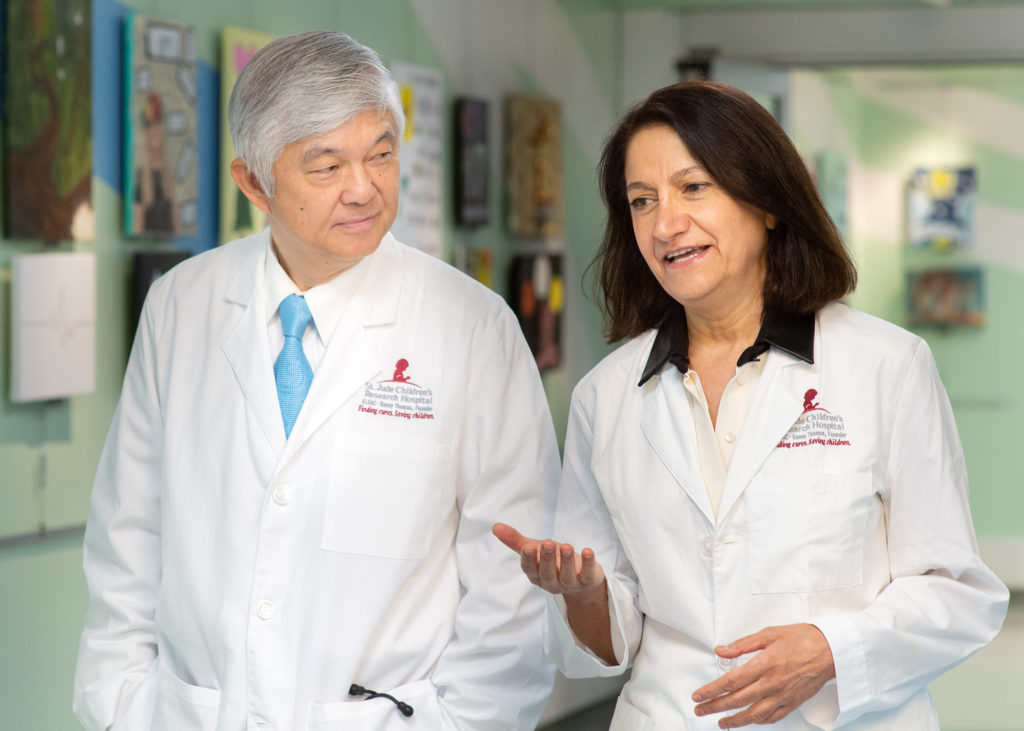Total 16 evaluated interventions aimed at preventing relapse by improving systemic and CNS disease control. Researchers found that adding doses of chemotherapy in the cerebrospinal fluid earlier in care improved CNS control without adding toxicity for high-risk patients.
On the predecessor clinical trial (Total 15), the rate of CNS relapse for high-risk patients was 5.7%. Under Total 16, the rate of CNS relapse for a similar group of patients was reduced to 1.8%, the lowest among reported studies. As in Total 15, no patient received prophylactic cranial radiation. These results further supported the conclusion of Total 15 that all children with acute lymphoblastic leukemia can be safely spared prophylactic cranial radiation.
“In cancer research, leukemia always leads the way,”said corresponding author Ching-Hon Pui, M.D., St. Jude Department of Oncology chair. “St. Jude is at the forefront of a new era of cancer treatment where therapies are optimized to provide the maximum benefit to all patients in terms of survival and quality of life, even those at the highest risk.”
ALL, which affects white blood cells, is the most common form of childhood cancer. In the U.S., 90% of patients are cured of their disease. Total 16 enrolled 598 patients age 18 and younger from 2007–2017. This study included all subtypes of ALL, including B-ALL and T-ALL, those with Philadelphia chromosome rearrangements, and infant leukemia, among others.
“In addition to relapse, infections and other treatment complications are the things that keep physicians up at night,” said first author and principal investigator of the study Sima Jeha, M.D., of the St. Jude Departments of Oncology and Global Pediatric Medicine. “Our work will continue until the day when every patient can thrive after treatment.”
The next St. Jude clinical trial for ALL, Total 17, continues to stratify patients based on their risk of relapse and introduces novel molecular targeted and immunotherapies, including CAR-T cells.
The study’s other St. Jude authors are Dequing Pei, John Choi, Chang Cheng, John Sandlund, Hiroto Inaba, Jeffrey Rubnitz, Raul Ribeiro, Tanja Gruber, Susana Raimondi, Raja Khan, Jun J. Yang, Charles Mullighan, James Downing, William Evans and Mary Relling. Elaine Coustan-Smith and Dario Campana of the National University of Singapore also contributed to the study.
The research at St. Jude was funded by grants from the National Cancer Institute (CA21765, CA36401, CA176063 and P50 GM115279), and ALSAC, the fundraising and awareness organization of St. Jude.
St. Jude Children’s Research Hospital
St. Jude Children’s Research Hospital is leading the way the world understands, treats and cures childhood cancer and other life-threatening diseases. It is the only National Cancer Institute-designated Comprehensive Cancer Center devoted solely to children. Treatments developed at St. Jude have helped push the overall childhood cancer survival rate from 20% to 80% since the hospital opened more than 50 years ago. St. Jude freely shares the breakthroughs it makes, and every child saved at St. Jude means doctors and scientists worldwide can use that knowledge to save thousands more children. Families never receive a bill from St. Jude for treatment, travel, housing and food — because all a family should worry about is helping their child live. To learn more, visit stjude.org or follow St. Jude on social media at @stjuderesearch.
Original post https://alertarticles.info


